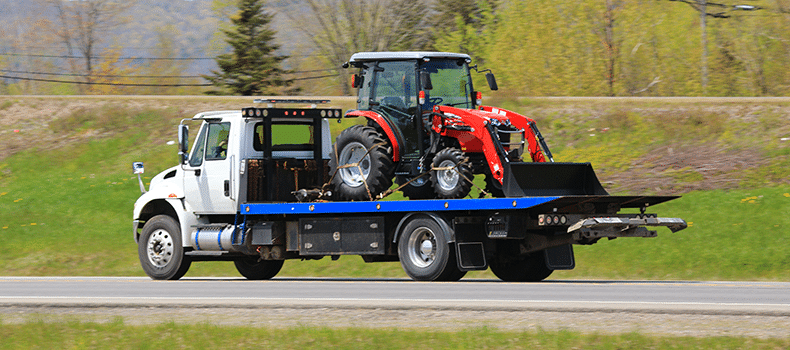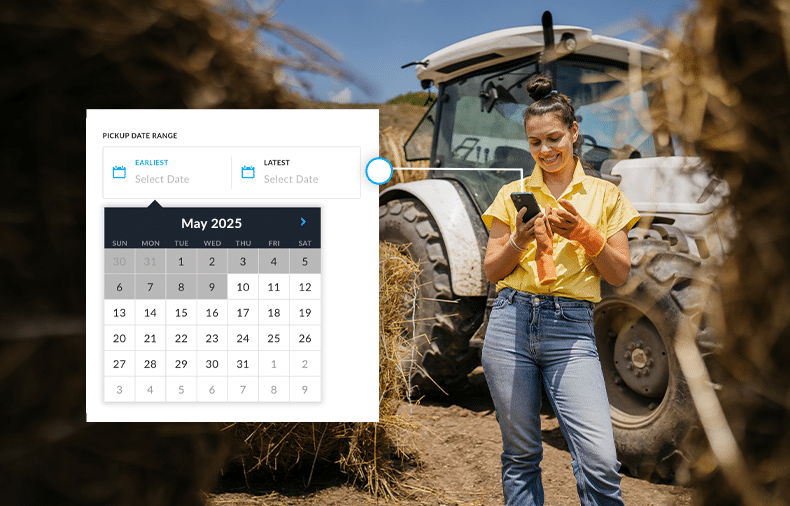If you’re looking for the cheapest way to ship a tractor, you’re not alone. Whether you’re a farmer on a budget, a buyer who scored a deal across state lines, or a dealer moving multiple machines, cost is often the number one concern. Tractor shipping can be expensive—but there are smart, proven strategies to help you minimize costs without sacrificing quality or safety.
In this guide, we’ll break down how to find affordable tractor transport, what factors influence pricing, and how to avoid common pitfalls that can end up costing you more in the long run.

1. Understand What Drives Tractor Shipping Costs
Before finding ways to save, it helps to understand what affects pricing in the first place. Tractor shipping costs are typically based on:
- Distance: Longer hauls cost more overall, but often less per mile.
- Size and weight: Larger tractors require heavier-duty trailers and may need special permits.
- Transport type: Open trailers are cheaper than enclosed ones.
- Route access: Remote pickup or delivery locations may add costs.
- Season and demand: Prices can spike during busy agricultural seasons.
On average, expect to pay $2–$3.50 per mile depending on these variables. Short hauls under 200 miles might run you $300–$800, while cross-country shipments can easily climb past $5,000.
2. Use uShip — It’s the Cheapest Way to Ship a Tractor
One of the easiest and most effective ways to ship your tractor affordably is to use uShip. Instead of calling carriers one by one, uShip lets you list your shipment and receive bids from multiple user-reviewed transporters competing for your business.
This marked-based format gives you leverage. You can:
- Compare prices side by side
- Read customer reviews and carrier ratings
- Choose based on cost, availability, or delivery speed
The competitive nature of the platform tends to drive costs down—especially if you’re flexible with timing (more on that next).
3. Be Flexible With Pickup and Delivery Dates
Urgency costs money. If you’re able to give transporters a flexible pickup window, you’re far more likely to be matched with a truck already headed in your direction. This is known as backhauling — when a truck returning from a delivery fills an otherwise empty trailer at a discount.
Carriers love backhauls, and many offer reduced rates to fill that return leg. If you’re not in a rush, it’s one of the best ways to unlock significant cost savings.
4. Choose Open Transport Over Enclosed
While enclosed trailers offer full weather protection, they are typically overkill for tractors. Most tractors are built for tough conditions and can handle exposure during transit, and they simply won’t fit…unless you’re moving a smaller tractor.
Choosing open transport (such as a flatbed or step-deck trailer) is significantly more affordable and is the industry standard for agricultural equipment. It’s also far more available, so you’re likely to get better quotes and faster service. It will likely be the only option for most tractors regardless.
5. Know the True Cost of “Cheap” Carriers
While low pricing is important, it’s critical to avoid cut-rate haulers with no insurance, minimal experience, or poor reviews. Some tractor owners are lured in by ultra-low quotes, only to experience damage, delays, or communication nightmares.
Always check that your carrier:
- Has proper DOT and FMCSA registration
- Offers cargo insurance with appropriate coverage
- Has a record of reliable communication and delivery
With a platform like uShip, all these details are available upfront, allowing you to make an informed decision — not just a cheap one.
6. Reduce Tractor Size (If Possible)
Tractor size and weight are major cost factors. If you can remove attachments to reduce dimensions below oversize thresholds, you may avoid needing special permits or escorts — which can add to your shipping bill.
When listing your shipment, be precise with your dimensions. Overestimating may cost you more; underestimating may result in rebooking fees. If unsure, contact your carrier before finalizing.
7. Avoid Last-Minute Bookings
Just like airfare, the sooner you book tractor transport, the better your price will likely be. Last-minute or same-day bookings limit your options and reduce your ability to negotiate. Booking 1-2 weeks in advance gives you access to more competitive bids and better availability.
Final Thoughts: Cheapest Isn’t Always Best — But It Can Be Smart
Shipping a tractor doesn’t have to drain your budget. With a little planning and the right tools, you can get reliable, professional transport without paying top dollar. uShip helps you strike the balance between cost and quality by letting you compare multiple bids from reputable carriers.
The key is to focus on smart savings — not just lowball quotes. Being flexible, choosing open transport, and accurately listing your shipment can go a long way toward cutting costs without compromising safety or reliability.
🚜 Ready to ship your tractor on a budget? Get a free quote on uShip and see how much you could save today.



